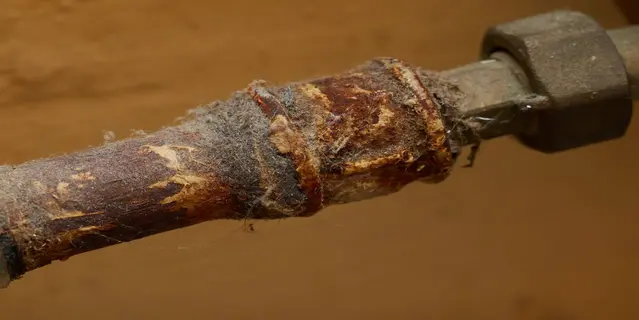
Most homes have their original plumbing systems. While plumbing pipes are designed to last for decades, those decades of use can slowly take their toll on your plumbing, causing an increasing number of problems over time. If your home has an aging plumbing system, you may be aware of the problems it can cause—or you may not have had any plumbing problems to date. However, all older plumbing systems should be checked regularly by your Longview plumber to evaluate your plumbing’s condition and determine how to best proceed if there is a problem or concern.
Drainage Problems
Older plumbing systems often develop drainage problems, as minerals, grease, debris, and more build up in drains over time and can affect their ability to carry water away. Slow interior drains and backups are two common problems in older homes that can be attributed to this buildup. Regardless of whether your sewer line is made from cast iron, plastic, concrete, or clay, if it is original to your home, it could be in need of cleaning or replacement. Years of buildup, tree root growth, or additional building and other changes in your yard can partially or even completely plug or collapse portions of your sewer line, leading to problems that range from mild to severe. Additionally, homes built in the 1940s and 1950s may have drainage pipes made from Orangeburg, which tar paper wrapped around itself to form a pipe. Orangeburg is very susceptible to rot and should always be replaced. Because your home relies on your drains to carry wastewater away, this portion of your plumbing should never be ignored during a plumbing inspection and you should call your plumber promptly if you suspect a problem with your sewer drain, even if it appears minor.
Corrosion
Homes built before the 1960’s typically have galvanized steel pipe throughout their plumbing systems. Galvanized pipes are particularly susceptible to corrosion over time, as dissolved minerals in your home’s incoming water become lodged on the walls of the pipe. This buildup can cause deterioration, particularly in joints and fittings, while also narrowing the diameter of the pipes, affecting water flow. Thus, corrosion and mineral buildup are often the cause of low water pressure in older homes, due to leaks that lessen the amount of water that reaches your faucet, as well as a smaller volume through which incoming water can travel. If your home has poor water pressure, it’s important to discuss the issue with your Longview plumber to determine if it could be due to an aging plumbing system. There are numerous solutions for this problem. While it is best to replace your entire plumbing system to restore proper water flow and prevent further problems, addressing the most problematic area first can be a more economical solution, especially if budget is a concern. Additionally, corrosion can affect the pipes outside your home as well, so have your plumber check your home’s water main to determine if it is in need of replacement or if your home’s plumbing is failing. This pipe is likely just as old as your home’s interior plumbing and may also require attention.
Don’t let an older plumbing system catch you unawares. Talk to your Longview plumber about whether your home’s plumbing could be at risk for failure. He can recommend how to address any issues now or avoid them in the future. A small amount of planning today could save you trouble tomorrow.
Does your home have an aging plumbing system?
- I think our home was constructed after the 1960s, but I’m not sure.
- We have galvanized steel pipes, but there’s never been a problem.
- Our home’s plumbing is definitely aging, and we’ve had several problems, it’s time to call our plumber.

